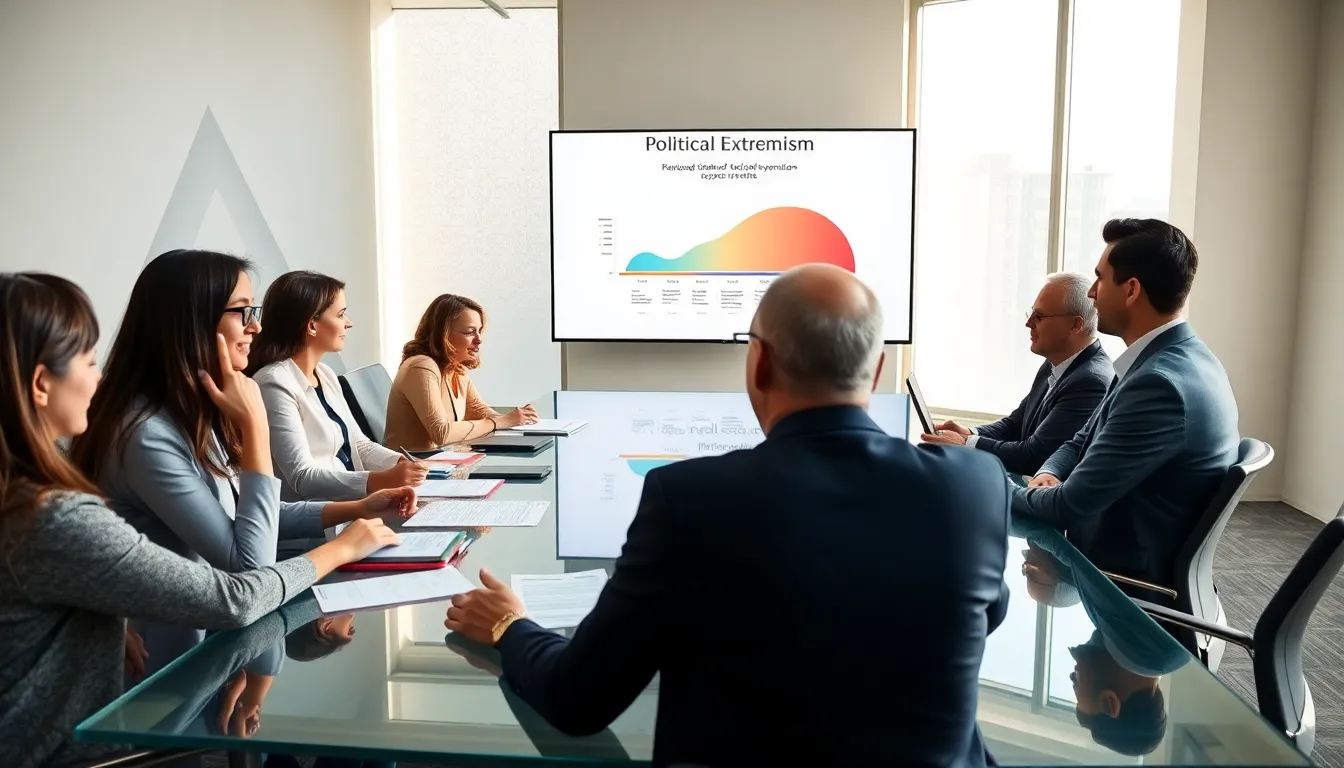In a world where political extremes seem to be on everyone’s radar, understanding political extremism is more important than ever. It’s that controversial topic that can clear a room faster than a surprise tax audit. No one wants to talk about it, yet here we are. Political extremism shapes societies, influences elections, and even determines whether you can buy a house in the neighborhood you like. This article will take a deep jump into what political extremism truly is, its historical underpinnings, and how it manifests in our everyday lives. So, whether you’re sipping coffee or scrolling through social media, prepare to be informed and entertained.
Table of Contents
ToggleUnderstanding Political Extremism

Political extremism refers to ideologies or movements that are significantly outside the political mainstream, often advocating for radical changes to society. These extremities aren’t confined to a single ideology: they can be left, right, or even far-reaching into nationalism or radicalism. The essence of political extremism lies in its rejection of moderate viewpoints, often branding them as tools of oppression.
At its core, extremism thrives on fervent beliefs, and strong emotions drive these convictions. The individuals involved often perceive their cause as not merely political but as a moral imperative. This belief can make discussions about political extremism particularly heated, as those involved may claim moral high ground. Understanding this fervor is crucial for grasping how political extremism operates on both individual and societal levels.
Historical Context of Political Extremism
A look back at history reveals that political extremism is not a new phenomenon. It has roots that can be traced back centuries, long before social media amplified every fringe opinion. From the French Revolution to the rise of totalitarian regimes in the 20th century, extreme ideologies have dramatically shaped history.
The Cold War period, for instance, fostered heightened political extremism on both sides of the Iron Curtain. Leftist revolutions in Latin America led to counter-revolutionary regimes fueled by right-wing extremism in the United States. Each extreme felt compelled to take a stand against the other, often leading to brutal battles for ideology, territory, and power. These historical examples serve to remind us that political extremism can arise during times of uncertainty, often filling a vacuum left by moderation.
Modern Manifestations of Political Extremism
Fast forward to today, and the face of political extremism has evolved, but its effects are still far-reaching. The rise of social media has provided a platform for radical voices to amplify their messages. Extremist groups, now more organized and interconnected than ever, can reach vast audiences instantly, promoting their ideologies without the filtering of traditional media.
Consider events like the Capitol insurrection in January 2021, where individuals fueled by conspiracy theories and extremist ideologies attempted to overturn election results. Such actions illustrate how modern manifestations of political extremism blend digital influence with real-world consequences. The online world, with its echo chambers, allows extremists to nurture their ideologies, often detached from civil discourse, leading to dire societal ramifications.
Causes of Political Extremism
Various factors contribute to the rise of political extremism, many of which are deeply rooted in societal issues. Economic instability, societal marginalization, and the feeling of disenfranchisement are significant catalysts. When individuals perceive that they lack power or representation in the political system, they may turn to extreme ideologies as a means of expressing their outrage or frustration.
Also, psychological elements also play a role. Individuals drawn to extremist groups often seek a sense of belonging or identity. The promise of community can be irresistible to those feeling isolated or disillusioned. Understanding these causes is critical for addressing and mitigating the threat posed by political extremism.
Impact on Society and Governance
The ramifications of political extremism extend far beyond individual beliefs: they permeate society and governance alike. When extremism infiltrates mainstream politics, it leads to polarization. Dialogue breaks down, and compromise becomes increasingly difficult. Legislative gridlocks become the norm rather than the exception, making effective governance a daunting challenge.
Also, political extremism can foster societal discord. Hostile environments develop where differing opinions are not just dismissed but actively vilified. This division can escalate to violence, as seen in various protests and riots across the globe. The implications are profound: democratic institutions can become weakened, and community bonds eroded, leading to an unstable society.
Combating Political Extremism
Tackling political extremism requires a multi-faceted approach that includes education, community engagement, and policy reform. Education plays a vital role in increasing awareness and fostering critical thinking skills among individuals, helping to immunize them against extremist ideologies.
Promoting dialogue between differing political viewpoints can also help bridge the gap between extremes. Communities can organize forums or discussions where people express their opinions in a respectful environment.
Finally, policymakers must consider addressing the root causes that lead to extremism. By investing in economic initiatives aimed at reducing inequality and providing opportunities for all societal segments, countries may be able to decrease the appeal of radical ideologies.
This collaborative and comprehensive approach may prove essential in combating political extremism effectively.





